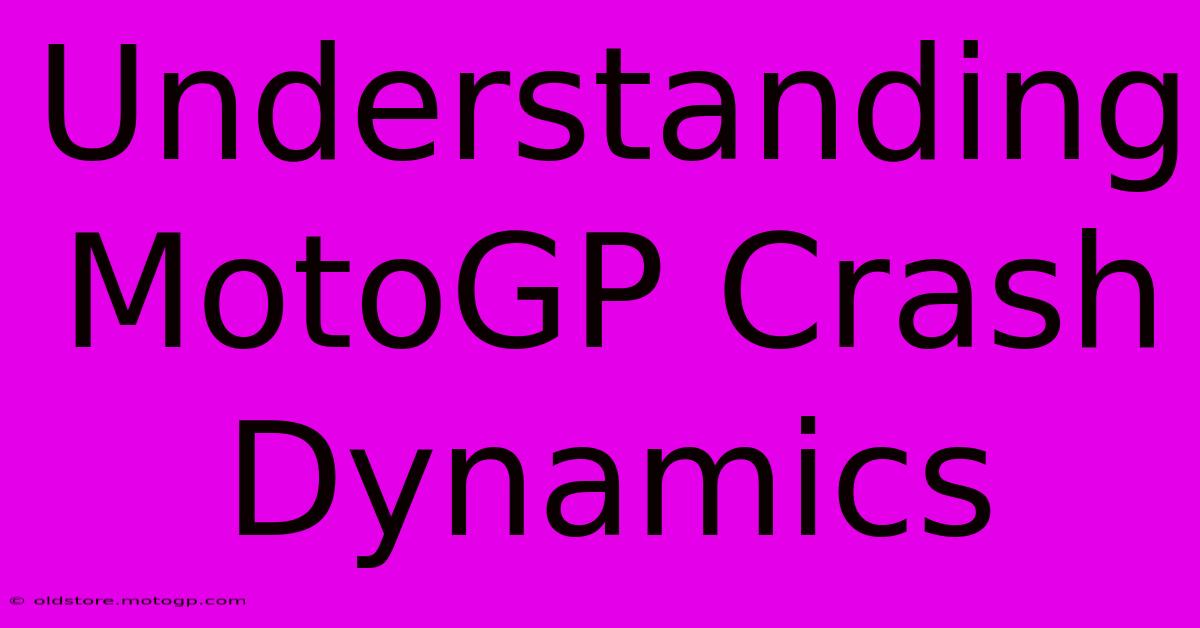Understanding MotoGP Crash Dynamics

Table of Contents
Understanding MotoGP Crash Dynamics: A Deep Dive into High-Speed Impacts
MotoGP, the pinnacle of motorcycle racing, showcases incredible skill and breathtaking speed. However, the inherent risks are undeniable, with crashes a frequent, albeit unfortunate, occurrence. Understanding the dynamics of these crashes is crucial for improving rider safety, designing better protective gear, and appreciating the immense forces at play. This article delves into the complex physics behind MotoGP crashes, exploring the factors contributing to impact severity and the resulting injuries.
The Physics of a MotoGP Crash: A Multi-Factor Equation
MotoGP crashes aren't simple collisions; they're complex events influenced by several interacting factors:
1. Speed and Momentum: The Primary Culprits
The sheer speed of MotoGP bikes – often exceeding 200 mph (320 km/h) – is the most significant factor determining crash severity. Momentum, the product of mass and velocity, dictates the force of impact. The higher the speed, the greater the momentum, and consequently, the greater the impact force. This immense force is what causes the significant damage observed in crashes.
2. Impact Angle: The Twisting Factor
The angle at which a rider and their machine impact an object (another rider, the track, or a barrier) greatly influences the outcome. A head-on collision generally results in higher forces concentrated on the front of the bike and rider. Angular impacts, on the other hand, introduce rotational forces that can cause more complex injuries. These forces can lead to significant twisting and shearing of the body and the motorcycle itself.
3. Surface Characteristics: Friction and Deformation
The nature of the surface the rider impacts plays a critical role. A smooth surface, such as asphalt, offers less friction, resulting in greater sliding distance and potentially prolonged impact. Conversely, a rough surface or a barrier can create significant frictional forces, abruptly stopping the bike and rider, leading to potentially more concentrated impact. The deformation of both the bike and the impacting object also absorbs some energy, reducing the force transferred to the rider. However, this deformation can also be a source of additional injury.
4. Rider Position and Protective Gear: Mitigating the Impact
The rider's position at the moment of impact is crucial. A rider who is able to brace for impact will generally experience less severe injuries. Protective gear, including leathers, helmets, and air bags, is designed to absorb and distribute impact energy, significantly reducing the force transferred to the body. The effectiveness of this gear depends on the type, design, and condition of the equipment and the forces involved in the crash.
Types of MotoGP Crashes and Their Dynamics
While there's no single classification, MotoGP crashes can be broadly categorized:
- High-side crashes: The rear wheel loses traction, causing the bike to suddenly lift and throw the rider over the handlebars.
- Low-side crashes: The front wheel loses traction, causing the bike to slide out sideways.
- Collisions: Contact between riders or the bike and other obstacles.
Each of these types has unique dynamic characteristics impacting injury patterns. For instance, high-side crashes often result in significant upper body injuries, while low-side crashes can lead to more lower body injuries. Collisions involve a complex interaction of forces from multiple sources.
Improving Safety: Ongoing Research and Development
The quest for enhanced rider safety is a constant process. Research into crash dynamics, materials science, and protective equipment design is ongoing. This includes the development of:
- Improved protective gear: Advanced materials and designs are continually being developed to better absorb and distribute impact forces.
- Track safety improvements: Modifications to track design and barriers aim to reduce impact severity.
- Rider training and techniques: Enhanced training programs help riders develop skills to mitigate the risk of crashes.
Conclusion:
Understanding the complex dynamics of MotoGP crashes is crucial for enhancing rider safety. By analyzing the interplay of speed, impact angle, surface characteristics, and rider protection, researchers and engineers can develop safer equipment, refine track designs, and improve rider training techniques. The continuous pursuit of safety in this high-risk sport is a testament to the dedication to minimizing the impact of inevitable crashes.

Thank you for visiting our website wich cover about Understanding MotoGP Crash Dynamics. We hope the information provided has been useful to you. Feel free to contact us if you have any questions or need further assistance. See you next time and dont miss to bookmark.
Featured Posts
-
The Role Of Technology In Shaping The Best Moto Gp Riders
Feb 21, 2025
-
F1 Shuttles Your Personalized Race Day Transport
Feb 21, 2025
-
Qualifying Results Moto Gp Grid Promises A Close And Exciting Race
Feb 21, 2025
-
The Sting Formula 1s Digital Ecosystem
Feb 21, 2025
-
How Much For A Taste Of Moto Gp Victory
Feb 21, 2025
